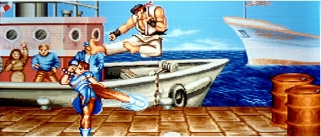Developer Interviews 2021: Monster Hunter Rise
Ryozo Tsujimoto
Managing Corporate Officer
Head of Consumer Games Development Division 2
He has served as the series producer since the release of Monster Hunter Freedom 2 in 2007. As producer for the latest title, Monster Hunter Rise, he oversees all aspects of production.
-
Initially released in March 2021, Monster Hunter Rise (Rise, below) was also brought to PC in January 2022 and has become a massively popular title with cumulative sales exceeding 8 million units (as of January 18, 2022)—and the game’s momentum shows no signs of slowing down.
As a first for the Monster Hunter series, Rise was developed with Nintendo Switch in mind. Can you give us some insight into the reasoning behind that? -
We were excited about the idea of creating an all-new Monster Hunter for Nintendo Switch. We wanted to take advantage of the Nintendo Switch system’s unique ability to function both as a stationary and portable console. Unlike with Monster Hunter: World (World, below) and Monster Hunter World: Iceborne, we created Rise with this idea of portability in mind.
In a lot of ways, the previous Monster Hunter titles that came out on handheld consoles were what sparked the popularity of the series. Clearly, the ease of playing on-the-go or gathering with a group of friends played a big part in the games’ success. With Rise, we wanted to make a game that fit the rhythm of your life, where you could casually pick up the game and do a quest in your spare time.
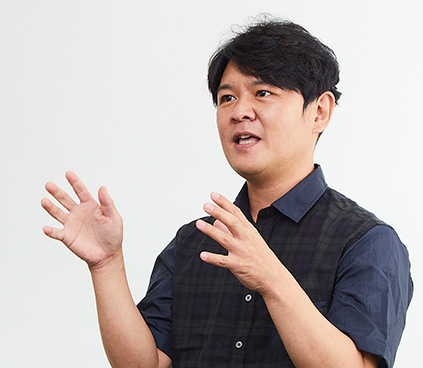
-
Were there any big adjustments in regards to developing for Nintendo Switch?
-
The biggest change came from our switching game engines used for development. Up until Rise, the Monster Hunter series was historically developed using Capcom’s MT Framework engine. Given this opportunity to develop this title for Nintendo Switch, we moved development for the series over to our proprietary RE ENGINE.
In terms of gameplay, I always try to take on some new challenge with each Monster Hunter game that I work on. For example, in Rise we implemented hunting actions using the Wirebug mechanic in order to give movement a more exhilarating, three-dimensional feel.
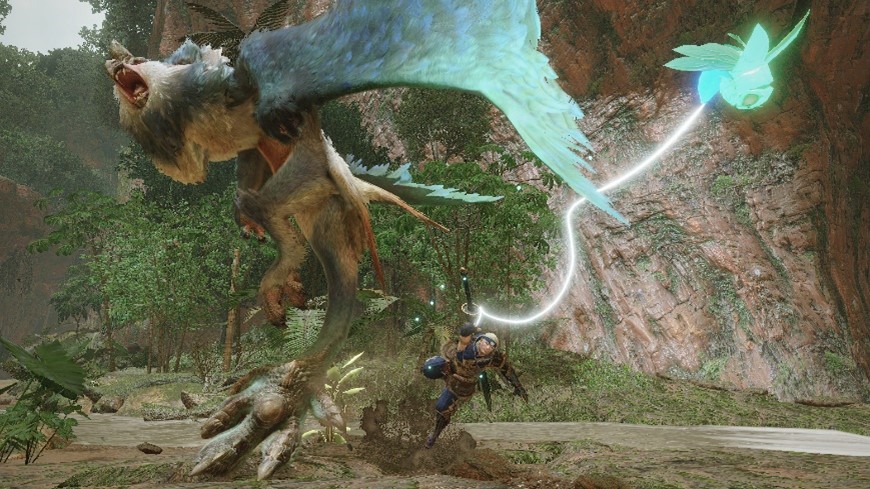
-
Did the decision to go with RE ENGINE change how you made the game?
-
As game consoles are constantly evolving, we felt it was vital to use the latest tools and technology not only to keep up with the times, but also to lay down a foundation for the Monster Hunter series to stay successful in the future.
As I mentioned, this was the first Monster Hunter we developed on RE ENGINE, so there was a lot of refinement done in customizing the engine to fit the needs of the project. As a result, we were able to realize a seamlessly connected map for Nintendo Switch similar to that seen in World.
-
It seems like RE ENGINE enabled you to achieve the highest-quality for Nintendo Switch.
-
I agree. Not only does the game boast some of the best graphics currently available for Nintendo Switch, but it also lets you traverse seamlessly through open locales at high speeds and with minimal loading times. You can basically go anywhere you see. You aren’t limited to a single path; you can climb up a cliff to survey the surroundings and forge your own route.
Also, since Monster Hunter is an action RPG centered around hunting, we were very particular about how movement feels in the game. As a part of that, we incorporated Wirebug actions and animal companions called Palamutes to add to the comfort and freedom of exploring the vast three-dimensional world. We hope these new elements enhance the hunting experience, whether playing on-the-go or docked at home.
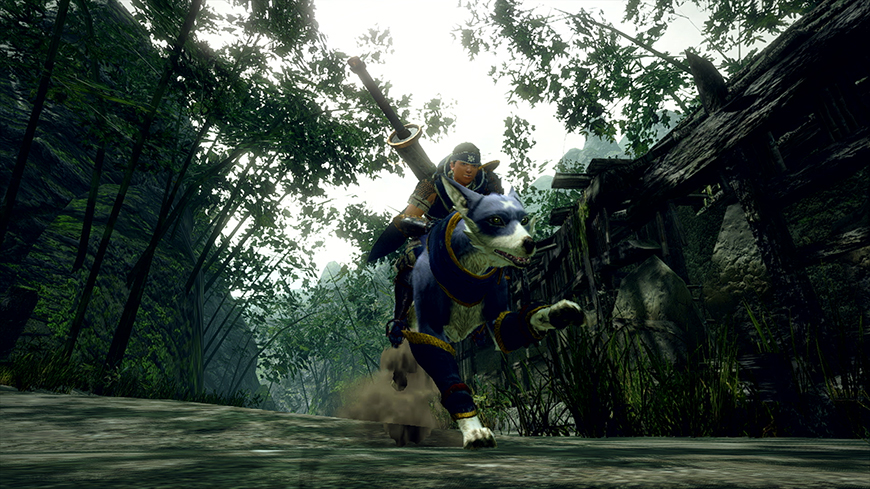
-
Rise has been widely well received. Have you noticed any changes in how people are playing the game?
-
Although some parts of the game are defined, such as the size of the locales and certain features like Arena Quests, Monster Hunter also supports online play, so we hope players will find their own way to enjoy the game. Recently, video streaming services such as YouTube have come into the mainstream and we’ve seen a lot of "let’s play" and "speed run" videos of Rise becoming popular, with the community graciously uploading videos. Some players even hold cosplay contests in-game by utilizing the character customization tool and combining different armor sets. There are many ways to play and enjoy the game.
One of the core principles of the Monster Hunter world is the avoidance of player vs. player conflict or killing. So, when I see players enjoying themselves in their own ways, in concordance with these values, it makes me happy knowing that we were able to convey this principle through the game.
-
Rise was developed during the pandemic and successfully released without any delays. What did you do to ensure that development progressed smoothly?
-
We implemented certain measures that allowed us to continue to work during the restrictions of the pandemic. For example, we had team members working from home or working at offset hours, and we drastically changed the layout of the office in order to maintain social distance within the company.
In addition to this, while the total number of people involved in the development process exceeded 300, we adhered to strict social distancing guidelines and used online resources for communication and task management instead of gathering for face-to-face meetings.
These adjustments took some time to get used to, but the development team was very enthusiastic about supporting each other to deliver a great game to our players. I’m convinced that it was this enthusiasm, this incredible show of determination made by everyone on the team, that carried us across the finish line.
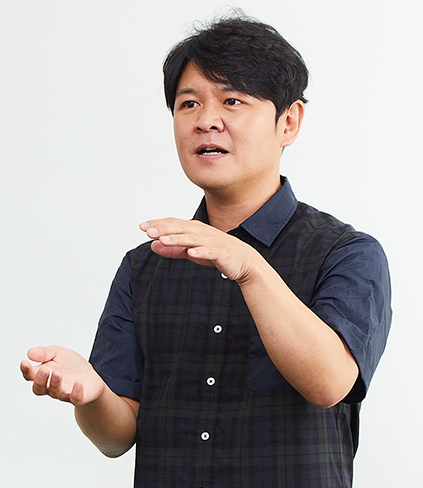
-
Was promotion for the game affected?
-
On previous titles, we’d usually lay out a general promotion schedule early on, and then use that as a guide as we moved forward. However, due to the pandemic, we had to cancel most in-person events. Fellow producer Kadowaki and I discussed the issue and decided to promote the game mainly using social media.
We found that in focusing our efforts on social media we could get information to more players more easily, increasing exposure to the game. This added exposure meant greater opportunities to generate interest in the game, though we had to take care not to overload people with too much too quickly, and so we took care with the balance and presentation of the various announcements about new game features.
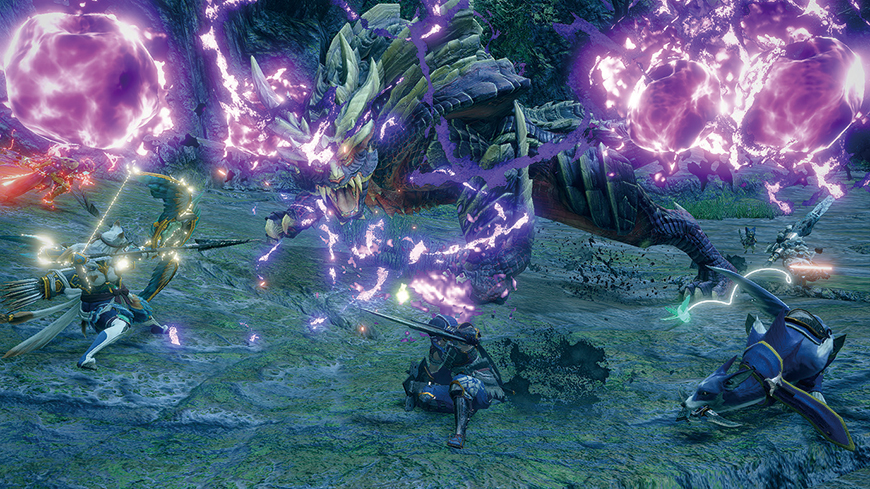
-
Sounds like there was a lot to consider. Was there anything else that you had to be mindful of throughout the process?
-
Promotional efforts were a concern due to having such a tight schedule. Many of our major titles are announced more than a year in advance, but with Rise, we made the announcement only half a year before its release. Because of this, however, we were able to pack a lot of detailed information into the game’s reveal, such as the release date, price, and additional special content, helping us to generate a lot of buzz quickly. Announcing it with Monster Hunter Stories 2: Wings of Ruin (released in July 2021) worked to amplify the effect for the Monster Hunter brand overall.
-
What other methods did you explore to promote the game?
-
Before the pandemic, the best way to announce a game was at events like E3, which is one of the world’s largest game exhibitions typically held every year in the United States. However, since the event was canceled that year, we were suddenly limited in the way we could promote the game. So, unlike in the past, we decided to put out produced YouTube videos. We asked the localization and overseas promotion teams to help with time differences and multilingual support so that we could make announcements simultaneously in each region to ensure maximum global impact.
-
Rise has been able to stay trending even after its release. Was this something you anticipated?
-
Yes, we’ve put a lot of effort into continuing to add fun new event quests for players to enjoy even after release. Some of these quests were made in collaboration with other Capcom titles such as Monster Hunter Stories 2: Wings of Ruin, Okami, the Street Fighter series, Mega Man 11 and Ghosts ‘n Goblins Resurrection. We’ve even worked with other companies to offer special equipment that can be used in the game.
In addition to this, we also released the highly requested PC version of Rise on January 13, 2022 (JST), bringing the hunting experience to an even wider range of players around the world.
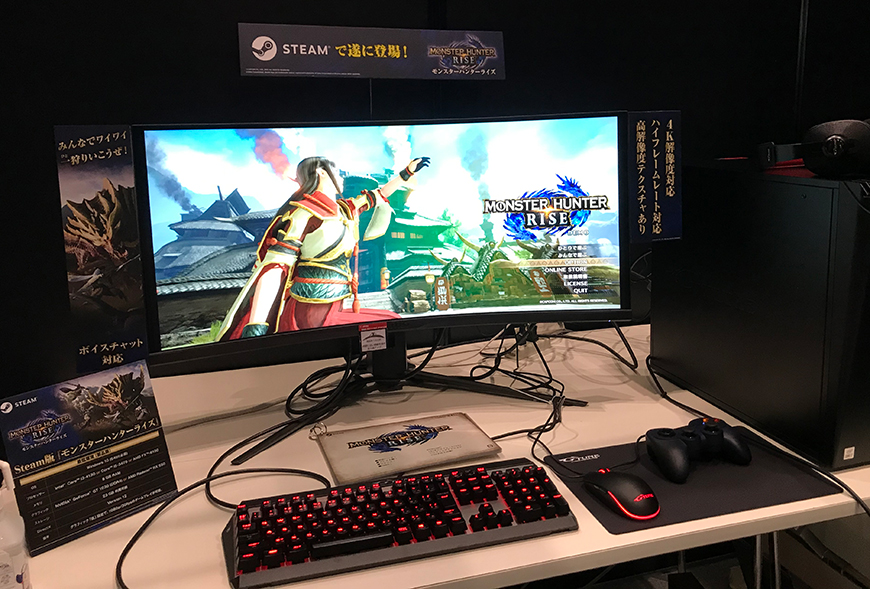
-
What’s more, the massive DLC expansion, Monster Hunter Rise: Sunbreak, was recently announced!
-
Yes! We are currently working on a whole new arc for Rise that will see the addition of new monsters, locales, game mechanics, and a new quest rank. We are working hard toward its scheduled summer 2022 release.
-
Just three years after the massive international success of World (released in 2018), Rise’s reception was overwhelmingly positive despite facing unprecedented challenges.
-
Yes, and we are extremely grateful. Although it’s hard for us to compare the two titles, the fact that World continues to sell well even after the release of Rise says a lot about the game. Obviously, both games are part of the Monster Hunter series, but I believe they shine in different ways. I strongly encourage fans to try out both games to see what makes Monster Hunter so special.
-
Any thoughts on what’s next for the series?
-
We’re constantly considering new developments for the series as a whole. Monster Hunter Stories, which was originally released in 2016, came about because there was a desire to create a Monster Hunter title that wasn’t action orientated. It’s kind of unusual for an RPG spinoff to come from an action game, and I’d like to see this series continue to grow.
On top of reinforcing our foothold as a perennial game title, we’re also branching out into other forms of media with productions such as the series’ first CG animated film Monster Hunter: Legends of the Guild which is currently being streamed on Netflix. We hope that multifaceted productions like this will help us expand the Monster Hunter brand worldwide.
-
With the series going on 17 years, do you think that the younger generation of Monster Hunter fans is growing?
-
It’s true, the history of Monster Hunter is a long one, and we are delighted to say that more and more young developers are joining Capcom with a passion for the series. We make it a point to incorporate their feedback throughout the development process and it’s wonderful to see them work and grow alongside our seasoned veterans. Fostering young creative talent is one of our biggest goals, so I want to continue to encourage them to get involved, because they will be the ones who will lead the next generation of Monster Hunter.
-
Could you give us a few last words about the future?
-
Being one of Capcom’s original IPs, I want to see the Monster Hunter series thrive. The success of World has motivated us as a company to continue to grow the series on a global scale. We’ll do this by innovating and taking on new challenges. Monster Hunter is definitely a series to keep an eye on in the future—the hunt will go on!
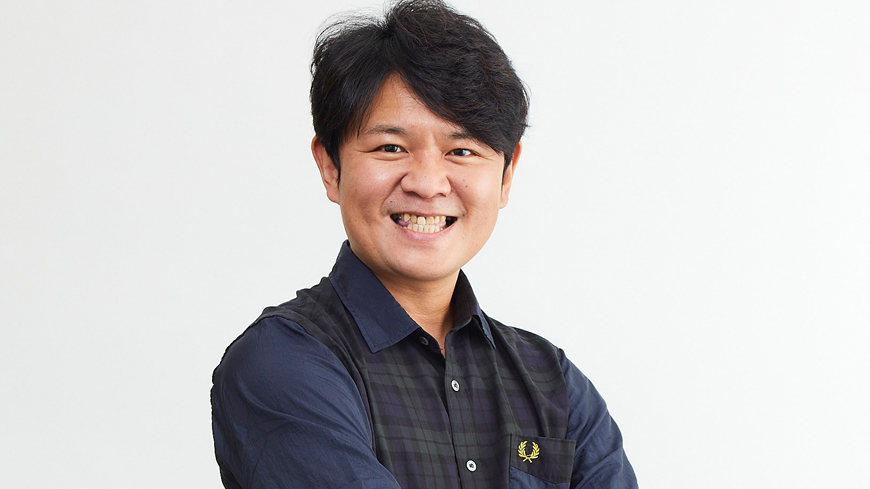
Developer Interview Archives
Archives
-
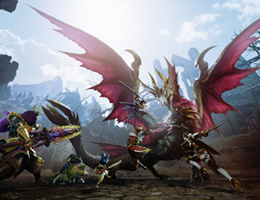
Monster Hunter Rise: Sunbreak Scheduled for June 30 Release!
– Capcom targets further global growth with launch of massive expansion – -
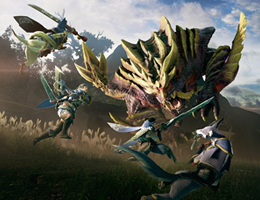
Monster Hunter Rise Surpasses 8 Million Units Globally!
– Solid growth of player base globally driven by release on PC platform – -
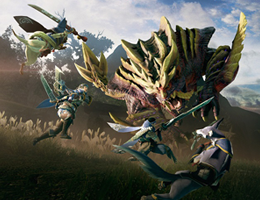
Monster Hunter Rise Wins Grand Award at the Japan Game Awards: 2021!
– Resident Evil 3 honored with Award for Excellence in the Games of the Year Division – -
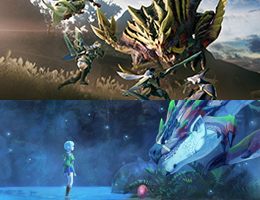
Capcom Announces Monster Hunter Rise!
– Along with RPG Monster Hunter Stories 2: Wings of Ruin, two new titles scheduled for release on Nintendo Switch – -
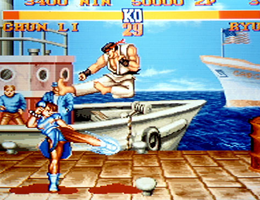
Platinum Titles
-
-
January 27, 20263Q FY2025 Financial Results Announcement
-
December 22, 2025-January 26, 2026Quiet Period
-
December 08, 2025Integrated Report 2025 added.
-
 Integrated Report
Integrated Report-
IR Materials Download
-
IR Social Accounts
-
Top 5 Recommended Pages
- Platinum Titles
- Game Series Sales
- Quarterly Reports
- Integrated Report
- Consumer Business Sales Volume
(as end of Nov. 30, 2025)




